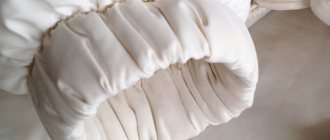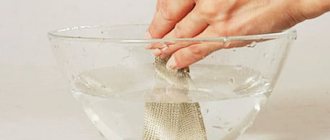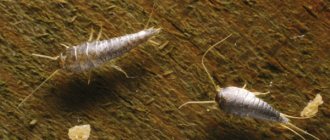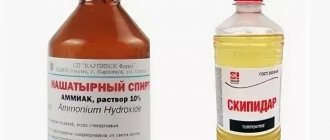Time affects each of us and leaves its mark. Even aluminum, which darkens and forms plaque and oxides, is not ignored. In itself, it is a lightweight and at the same time durable metal, which is why it is very popular in many areas, particularly in cooking. This is where contamination appears most quickly, and the question arises: how to clean aluminum at home? There is no desire to use dishes that have stains on them, much less cook food in them. And in order for fragile housewives to remain active and in a good mood for a long time, it is important that the pots are not heavy.
Ways and methods of polishing aluminum
To level out the roughness of the material and level out deep scratches in industrial conditions, complex technologies are used that involve working with chemical reagents. The process is performed using specialized equipment.
Electropolishing
This method involves restoring the coating and polishing aluminum to a mirror finish. The procedure involves processing the product in an electrolyte solution:
- the acid composition is heated in a special bath with an additional lead layer;
- lead cathodes are attached to aluminum;
- a current density of 10-50 A/dm² is passed.
Electropolishing of aluminum
Processing time is on average 5 minutes.
Chemical methods
The process of chemical polishing of aluminum is carried out using a special bath with a steel plate at the bottom:
- the tank is filled with a solution of sulfuric, nitric and phosphoric acids;
- the composition is heated to 90-120°C, depending on the composition of the material being processed;
- the aluminum product is immersed in an acidic environment for 30-45 seconds, then it must be rinsed with water;
- the processing algorithm is repeated 5-6 times;
- At the final stage, treatment is carried out with nitric acid 30%.
The electrochemical method of polishing aluminum involves the combined action of chemical reagents and electricity. In this case, the material being processed acts as an anode electrode, which is connected to a current source. The product is immersed in a reservoir with electrolyte, while the function of the second electrode is performed by copper cathodes.
Decorative etching
This technique for restoring aluminum products is a type of electropolishing. In this case, the workpiece is placed in a solution of phosphoric and chromic acids and exposed to anodes. The electrical voltage increases from 25 V to 40 V, and the ambient temperature during the process changes from 50°C to 80°C. As a result of processing within 15-20 minutes, the surface of the aluminum is covered with a chaotic pattern. Next, the product is thoroughly washed under running water, dried and painted with a special paint for organics.
Additional recommendations for work
Polishing of aluminum can be carried out using alkali solutions:
- trisodium phosphate;
- sodium nitrate;
- caustic soda;
- sodium nitrate.
Their temperature should be higher compared to the acid method, the limit is 120-140 °C. The products need to be held for approximately 5-20 seconds. When this technique is used, the aluminum loss will be approximately 8 µm of the total layer thickness.
Polishing aluminum at home
To restore the characteristic shine of an aluminum surface at home, various folk methods and household chemicals are used.
Tools and devices
What you need to have on hand to get rid of scratches and dullness, and restore the original aesthetics of objects: for this, use a special paste for polishing aluminum. You can also deal with the problem using a number of common cleaning products and kitchen products, including:
- soap solution;
- glass and porcelain cleaning products;
- cream of tartar, table vinegar;
- baking soda, salt, lemon, alcohol;
- sorrel, sour apple, kefir.
In addition, you will need the following set of tools for polishing aluminum:
- fine and medium grit sandpaper;
- felt-coated polishing discs;
- metal brush;
- rags.
When choosing products and devices for polishing aluminum products at home, you should take into account the composition and characteristics of the material being processed. Food-grade aluminum should not be polished with abrasives; gentle methods for eliminating defects are appropriate here.
Pre-cleaning
If you plan to work with a painted part, at the initial stage of the procedure it is necessary to carry out preliminary cleaning, remove coating residues and oxidation particles. For this, various solvents and abrasives are used.
Tartar polishing
Cream of tartar solution copes well with darkening and deposits on metal:
- dissolve cream of tartar in a container of hot water, add lemon juice and bring to a boil;
- moisten a soft cloth in the cooled solution and wipe aluminum objects to a mirror shine.
Polishing of aluminum can be done with cream of tartar.
If the tartar is diluted with a small amount of water to a paste-like consistency, you can obtain an effective remedy for soot, oxidation and various contaminants on metal products.
Application of polish
As a special product for the care of aluminum products, polish has a number of advantages:
- helps quickly eliminate scratches and other visual defects;
- allows you to polish the aluminum surface to a mirror shine;
- does not contain ammonia and other aggressive substances;
- forms a protective layer, provides a barrier against oxidation.
Paste for polishing aluminum in Moscow and other regions is presented in a wide variety of products.
The nuances of using polish:
- The surface is pre-cleaned of paint coatings and dirt using a metal brush.
- Alternately, roughness is eliminated using medium and fine grain abrasives.
- After grinding, a paste is applied to the aluminum and rubbed in a circular motion using a rag until it has a reflective effect.
- Remains of the product are removed with a clean napkin.
To increase resistance to minor scratches and dirt, the surface is varnished after polishing.
Electrochemical polishing of steel
Aluminum is a fairly light and durable metal, and therefore is often used in the kitchen as the main material from which cookware is made. When plaque appears, it becomes unpleasant to cook in it, and it is impossible for safety reasons, and therefore the question arises of how to clean aluminum until it shines.
Cleaning features, general recommendations
Heating of aluminum cookware occurs evenly and does not require much time. After some time, carbon deposits begin to appear on aluminum cookware and traces of oxide become noticeable. Most often, they try to clean aluminum using dishwashing detergent, but it can only remove external dirt and grease.
Dishes made from this material should only be washed cold, since they can easily be damaged when hot. If a hot metal is immersed in cold water, it will become deformed, and therefore you should try to avoid such a failure.
You should not try to clean burnt food immediately using iron sponges and other objects. To make the task easier, you just need to pour warm water and wait about half an hour. During this time, the food will get wet and can be removed using a regular dishwashing sponge.
It is not recommended to wash aluminum cookware in the dishwasher, since the dishwasher uses hot water during the washing process, which can damage the material. To avoid deformation, it is recommended to wash aluminum cookware by hand with warm water.
You should not use strong acids in the process, as they will not be able to restore the shine of the dishes, and may harm them. It is also not recommended to clean it with metal sponges, which leave scratches on the dishes.
Chemical polishing
Fast, simple, economical - this is how you can characterize this method of polishing small aluminum parts.
A solution of acids (orthophosphoric, sulfuric, nitric) with special additives is poured into a polishing bath made of acid-resistant steel (if the volumes are small - porcelain crucibles).
The parts are immersed in a hot solution (the solution temperature is high - 90-120°C - depending on the type of aluminum) for half a minute to a minute 5-6 times. In the intervals between dives, the parts are washed in a catcher, constantly shaking them.
Better polishing is obtained in a drum rotating at a certain speed. Parts with complex profiles are polished in a solution with a greater degree of preliminary use.
After chemical polishing, a film of contact copper remains on the product. To remove it, the products are washed under low-temperature running water in a trap and treated with 30% nitric acid.
Also, when chemically polishing aluminum, alkali solutions are used (trisodium phosphate, caustic soda, sodium nitrate, sodium nitrate). Alkaline solutions should have a higher temperature than acid solutions and may be 120-140°C. Exposure in solutions ranges from 5 to 20 s. During chemical polishing, the loss of aluminum is about 7-8 microns of the layer thickness.
Cleaning aluminum cookware
The main disadvantage of aluminum is its softness. It is very easy to damage and also leave scratches on it. Even with frequent washing with a melamine sponge, the surface will soon begin to become matte, as a large number of micro-scratches will remain on it.
- To restore shine, you need to use borax, ammonia and GOI paste. The latter needs to thoroughly rub the aluminum, and then, using a rag soaked in solvent, thoroughly rub the cutlery.
- Aluminum cookware can be cleaned with such products as soap, ammonia, table vinegar and table salt.
- Soot, oxide and other contaminants that accumulate on aluminum cookware can be easily removed using soft foam sponges or polymer bristles, microfiber or cotton cloths, and rags. It is necessary to ensure that they do not contain rougher and harder materials that can leave scratches.
- A good aluminum cleaner is a special product designed for cleaning glass or porcelain. They do an excellent job, gently removing dirt and adding shine to the dishes.
We also recommend reading: Order food online: how good are food delivery services?
Traditional methods of cleaning and polishing aluminum products
To give a shiny look to household items and decorative elements, use various recipes with simple and inexpensive ingredients.
Sour apple
To clean the container from carbon deposits, you need to cut the apple in half and rub the surface well with the half. The acid in the fruit helps to quickly remove soot.
Kefir or cucumber pickle
To combat dark spots, leave the dishes with brine or kefir inside for 12 hours. Next, you need to wash the product in warm water with a soft cloth.
Baking soda
Dilute soda with water to a paste consistency, which is applied to the metal and wiped with a sponge. This method will help to clean the product from plaque and dirt, and polish it to a shine.
Baking Soda - Aluminum Polish
Ammonia and borax
A homemade polishing mixture of borax (15 g) and ammonia (5 g) allows you to restore the beauty of the product and give the thing a mirror-like shine. The composition is applied with a sponge and rubbed well, then rinsed under running water.
Features of decorative etching
Polishing of aluminum can be done in a decorative way. This technique acts as a subtype of electropolishing. Aluminum alloys are etched by anodes according to the regime in a phosphorus-chromium electrolyte. A crystalline pattern is formed on the surface of the products, which looks like rosettes or frost. All parts are hung on the anode rod, and then processing can begin. Manipulations should be carried out at a voltage of 25-30 V. By the end, the voltage will rise to 35-40 V, the anode current density will be equal to the limit of 8-12 A/dm², while the temperature will vary from 50 to 80 °C.
After about 20 minutes the drawing will appear. If the voltage begins to rise arbitrarily, then the process can be considered complete. After completing the manipulations, the products are washed, dried well, and anodic oxidation is carried out on them. The aluminum is then painted with organic paint.
The mirror-like shine of aluminum can be obtained by another method of anodic etching, which is called sparking. For this purpose, before and after the process, the products are subjected to heat treatment according to a special scheme. You can use anodic etching “snowball”, which allows you to create a matte-sparkling surface.
The nuances of polishing aluminum sheet products
Leveling the surface and eliminating scratches on sheet metal is done using a polishing machine. Sequence of work:
- Preparatory stage. The surface is cleaned of paint, dirt and oxide using a metal brush. Use a soft cloth to remove residues and dust deposits;
- Grinding. Medium-grained abrasives correct visual defects, roughness, and deep scratches. Next, using fine sandpaper, level the surfaces to a perfectly smooth state.
The grinding machine allows you to process aluminum to an exceptional shine. The polishing wheel of the device is equipped with various types of attachments depending on the nature of the work and the characteristics of the material.
The nuances of working with a grinding unit:
- the polishing wheel, like the sheet of metal being processed, is moistened with water;
- as a result of friction, heating of the metal plane is observed, under the influence of the rotating circle, roughness is eliminated, small particles of metal and water are formed in the form of a slurry;
- regularly, at intervals of 1-2 minutes, turn off the device, rinse the polishing disc under running water, wash off particles of formations on the metal sheet;
- After leveling visual defects with the help of abrasives, the grinding machine wheel is equipped with a felt attachment and final polishing of the aluminum is performed.
The procedure is completed by treating the surface with a polishing paste, which promotes the formation of a coating with a mirror effect.











